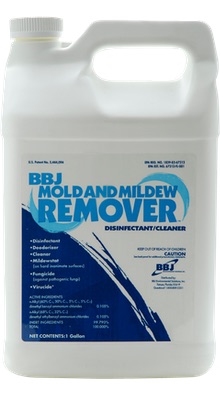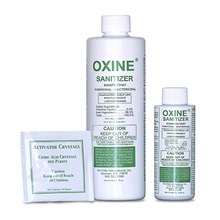
More Articles
"I had the entire HVAC system sanitized, so I should be set for a long time." Hmmmm! Well, not necessarily. This sounds great, but often people can put a bit too much faith in "sanitizing" that is undeserved.

Certainly, if you have a black or grey water episode that affects your HVAC system or somehow gets inside your ventilation ducts, thorough removal of potentially pathogenic or toxic microbial materials would absolutely be necessary to avoid complete removal and replacement of ducts or other materials affected. Or even possibly any water intrusion episode that results in heavy mold growth inside the unit or ducts, part of the handling might be sanitizing or something equivalent. But of course, that would be the last step following removal of all mold and moldy material (technically called "source removal") as well as addressing the source of the water intrusion that caused the microbial growth.
According to the Environmental Protection Agency (EPA), there are hazards that those concerned must be aware of prior to performing sanitization or disinfection. A study conducted by the EPA found that the use of sanitizers in air duct cleaning can cause potentially serious health issues and do not condone this action. Use of pesticides or other such materials that are not registered for use in HVAC systems can result in worse health effects than exposure to the biological contaminants they are designed to remedy.
Many companies offer to sanitize as a paid service or use it as a selling point for cleaning of HVAC systems. Many of those promoting sanitizing claim the sanitizer has been registered by the EPA, but being registered does not provide carte blanche for use in all parts of HVAC systems. Sanitization is often claimed to make the system more healthful by removing microbial growth including bacteria and mold. The sanitizing material will be applied to hard surfaces inside ducts and/or air handler, i.e. metal or potentially plastic in the case of flexible ducting, but HVAC systems that are to be sanitized contain porous materials that should not be subjected to potential toxins. Neither mold nor bacteria grow on non-organic materials. If the ducts are properly cleaned, dust and dirt containing organic material, which mold and bacteria will grow on, will be removed. Thus such health claims attributed to sanitization of ducts is bogus. Cleaners of HVAC systems should be asked to produce photos showing the condition before and after cleaning.

Any chemical being used in the cleaning process for HVAC systems is required by the Occupational Safety and Health Administration (OSHA) to have the Material Safety Data Sheet (MSDS) available at the job site. The chemical must be used in the manner and amount or dilution recommended by the manufacturer. Since many people are sensitive to chemical exposure, the client should be informed of any potential hazards with the use of any chemical products.
A sanitizer is a substance that kills a very high percentage, approaching 100%, of bacteria on a surface. It might also kill much or most of the fungal growth (including mold and yeast). Disinfectants and fungicides are somewhat more limited, but none of these are recommended for use inside ducts. They can be used in other portions of the HVAC system including coils and drain pans.
Materials that can be used in ducts are substances that can inhibit microbial growth such as fungistatic, bacteriostatic and deodorizers. These do not kill the microbes but can eliminate or slow down their growth. So "sanitizing" ducts is actual a misnomer if those delivering such a described service if they are obeying EPA recommendations or general health guidelines.
Proper use of antimicrobials and substances that retard microbial growth can help reduce the health risks that can accompany growth and amplification of potentially hazardous microbes. Incorrect or overuse of antimicrobial products can increase exposure to chemicals. Using such materials without following manufacturers guidelines, such as by incorrect dilution or less than sufficient coverage, can make the application infective.
When sanitizing HVAC systems or ducts is discussed, it is helpful or even vital that both the producer and the client know exactly what action to be performed. First of all, unless there is a specific contamination event that makes such service necessary, it would probably be better to skip it. Just make sure that the system is cleaned. Supplying evidence of the cleaning is helpful to the confidence of both the cleaning company and the client.
Steve Huff
Senior Indoor Air Quality Investigator






